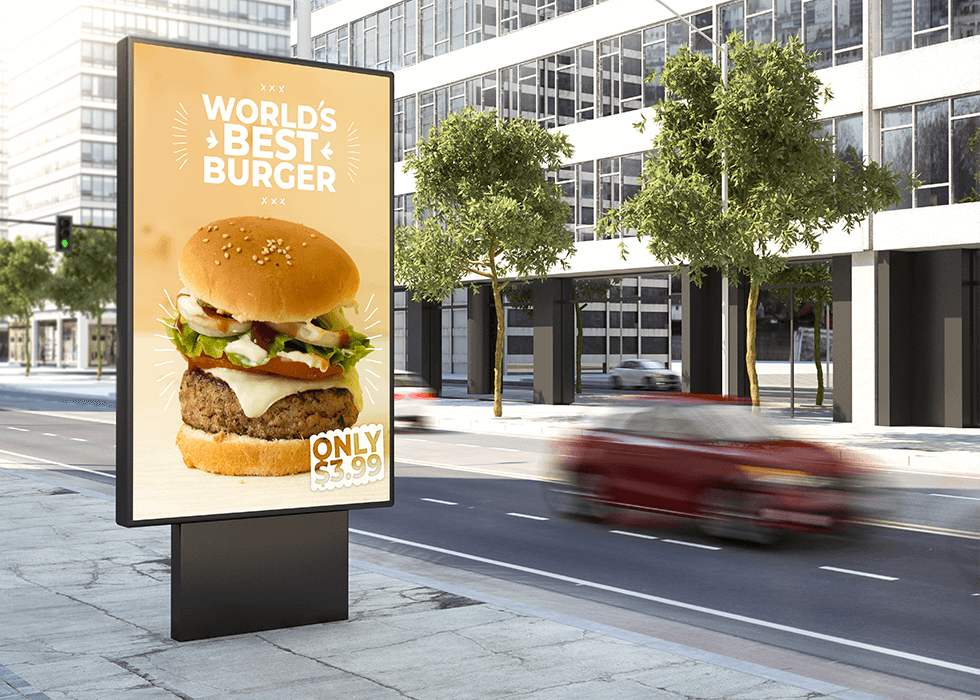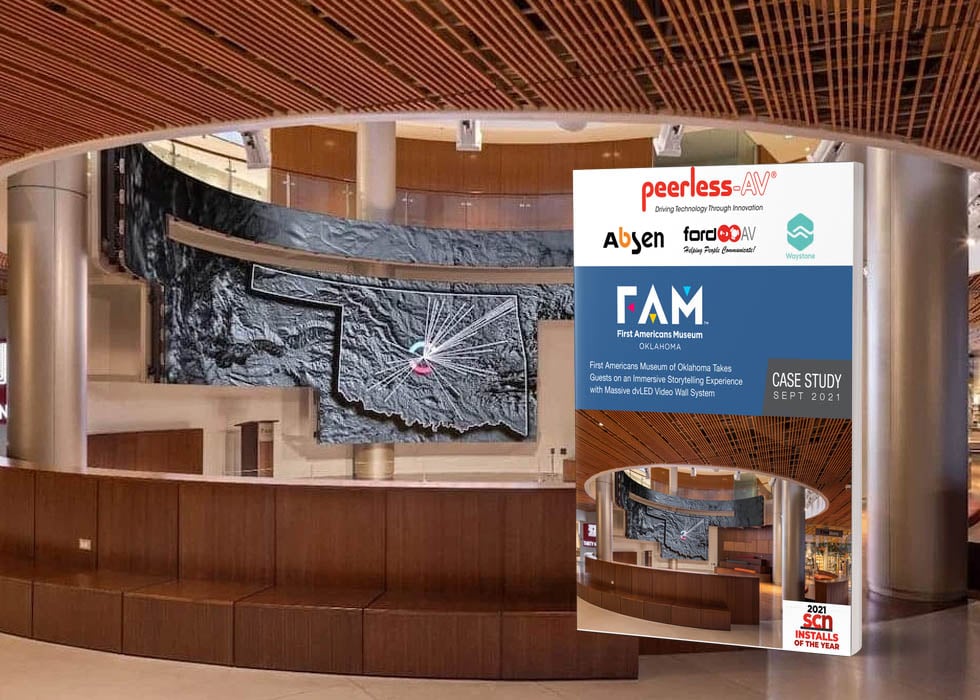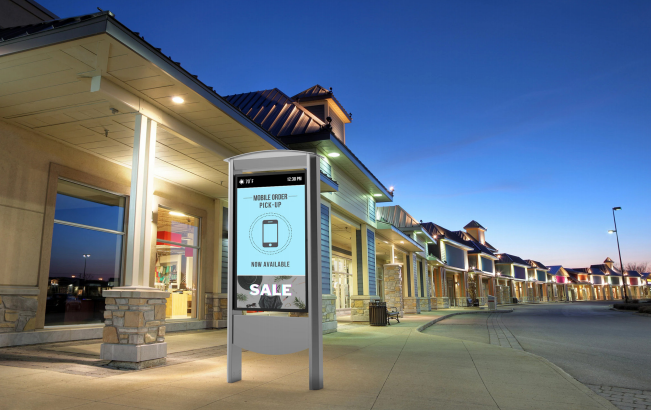
Enhance Your Brand's Visibility with Outdoor Digital Signage
Visibility is everything. For businesses aiming to make a lasting impression, outdoor digital signage has become one of the most powerful tools in modern advertising. From busy highways and public squares to stadiums, transit centers, tourist destinations, and retail exteriors, digital signage provides a dynamic platform to captivate audiences, drive engagement, and elevate brand recognition.
Unlike traditional static signs, outdoor digital signage combines bold visuals, animation, and interactive elements to cut through the noise and deliver your message. With consumer attention becoming increasingly fragmented and attention spans shorter, the need for eye-catching, adaptable advertising has only grown. Outdoor digital signage meets that need through measurable results and a forward-looking approach.
This article explores the foundations, benefits, implementation strategies, and challenges of outdoor digital signage, illustrating why it should be a key component of any forward-thinking advertising plan.
Understanding Outdoor Digital Signage
Outdoor digital signage refers to electronic displays used in open-air environments to broadcast advertisements, announcements, directions, or branded messages. These displays vary widely, from sprawling LED billboards and freestanding digital kiosks to LCD screens adorning buildings or bus shelters. A quintessential example is the famous Las Vegas Strip. Here, digital signs of all sizes vie for attention, calling people to shows, casinos, buffets, or Grand Canyon helicopter tours.
Evolution from Static to Dynamic Displays
Static signs of the past have been eclipsed by the capabilities of digital signage. Today's displays deliver high-resolution video, real-time updates, and even audience-targeted content. Technologies like touchscreens, QR codes, and motion sensors have transformed basic signage into interactive communication hubs.
But digital signage's appeal isn’t just its enhanced visibility. It’s also an essential tool for modern brands. Consumers today expect immediacy, relevance, and a visual punch. Businesses can tailor their messages to real-time conditions, local demographics, or even environmental factors like weather. Promote a flash sale, update event information, or provide wayfinding assistance with ease. Digital signage meets people where they are, literally and figuratively.
Its versatility has only grown, with multi-platform integration enabling seamless connections to social media feeds, mobile apps, or location-based services. This interconnectedness turns digital signs from simple ads into key components of a broader marketing ecosystem.
Furthermore, the rise of smart cities and connected public spaces has expanded its applications in urban planning, public service announcements, and tourism promotion. Cities and businesses alike leverage outdoor digital signage not only for revenue but as tools for community engagement and information dissemination.
Key Components
Outdoor digital signage is effective when powered by a well-integrated system of hardware and software:
- Hardware: Display screens (LED, LCD, OLED) supported by protective enclosures, media players, power supplies, and sturdy mounting systems. These elements ensure durability and visibility under all conditions.
- Software: Digital signage platforms handle content creation, scheduling, updates, and analytics. Many systems are cloud-based, allowing remote management and real-time updates across locations.
Benefits of Outdoor Digital Signage
Amplified Visibility and Interaction
Outdoor digital signage excels at grabbing attention. Unlike static billboards, digital signage adds movement, vibrant colors, and changing visuals that draw the eye. These features create a stronger cognitive imprint and influence decision-making. Who hasn’t been tempted to stop for lunch after catching an enticing ad on a digital display while driving? Motion and light naturally attract us, and when combined with interactive features like touch screens or QR codes, engagement skyrockets.
By encouraging participation, these displays make brand interactions more memorable. Features such as augmented reality overlays and social media integration take engagement to even greater heights, boosting recall and brand loyalty.
Cost-Efficiency and Adaptability
Though installation may involve a significant upfront cost, the long-term savings and flexibility are immense. Traditional print advertising requires constant reprinting, shipping, and manual installation. With digital signage, content updates are instant, waste-free, and cost nothing extra.
The versatility of digital signage also enables tailored advertising. A coffee shop might advertise hot beverages on cold mornings and switch to iced drinks in the heat of the afternoon with a few quick updates. This ability to adapt builds stronger connections with your audience.
Digital signage also enables real-time data integration. Live feeds like news, sports scores, or weather updates can be seamlessly displayed to match audience interests. Cloud-based systems allow businesses to control multiple signs from one hub, simplifying scheduling, tracking, and updates while maximizing ROI.
Environmentally Sustainable
Sustainability is now a critical concern for brands and consumers alike. Outdoor digital signage supports green initiatives by reducing reliance on disposable materials like paper and ink. Energy-efficient LED technology, coupled with ambient light sensors, reduces energy consumption. Cloud content management systems further minimize transportation emissions compared to distributing printed material.
Modern digital displays are also built to last. High-quality designs withstand extreme weather, reducing the frequency of replacements and maintenance. Unlike paper signage, which fades and becomes obsolete, digital displays stay sharp and relevant for years, promoting sustainability and reducing waste.
Implementing Outdoor Digital Signage
Strategic Location and Setup
Placement is crucial to successful digital signage. Busy urban intersections, shopping malls, stadiums, and transit hubs make excellent spots for visibility. Beyond foot traffic, factors like sightlines, sun exposure, and access to power must also be considered. Professional installation ensures weatherproofing and safety compliance, as well as optimal visibility.
Tourism-focused areas benefit especially from outdoor digital signage. Picture scenic lookouts, downtown boardwalks, or heritage districts. Well-placed digital signage can inform visitors, enhance navigation, and promote local businesses. Seasonal hotspots, such as ski resorts or beach towns, can highlight concerts, festivals, or timely activities in real time to boost engagement.
Integration with mobile apps, QR codes, or interactive maps expands usability for tech-savvy travelers. Imagine a tourist scanning a sign near a hiking trail to download maps, learn local history, or get dining recommendations nearby. With clever placement and relevance, digital signage can elevate first impressions.
Content Strategy and Management
Content is what turns a screen from a distraction into a destination. To captivate your audience, focus on:
- Visual storytelling that conveys your brand’s message clearly and emotionally.
- Engaging motion graphics that extend attention spans.
- Localized content such as language-specific ads or real-time updates.
- Rotating schedules that keep displays fresh and relevant.
Using analytics tools, brands can monitor interaction data to refine and optimize content for improved performance. Scheduling software simplifies content management, enabling automated updates across multiple sites effortlessly.
Challenges and Considerations
Initial Investment Costs
Outdoor digital signage requires substantial initial spend. Costs include purchasing displays, enclosures, software licenses, installation, and content creation. The expense can be daunting, ranging from a few thousand dollars to six figures depending on the setup.
However, it’s worth viewing this as a long-term investment. Studies show significant ROI, such as one that found outdoor LED signs on hotel premises increased annual sales by nearly 5%. Pair that with the opportunity to sell ad space to nearby businesses, and you’re looking at a revenue-generating asset.
Technical Challenges and Maintenance
The demands of the outdoors can present technical hurdles. Displays must endure rain, snow, dust, vandalism, and extreme temperatures. Regular maintenance, reliable tech support, and backup systems help mitigate these challenges.
To ensure long-term reliability, opt for tamper-resistant, weatherproof hardware. Vendors offering comprehensive service contracts for routine maintenance and system monitoring are invaluable. Staying ahead with regular software updates also ensures compatibility and security, keeping signage functional and effective year-round.
Outdoor Digital Signage: The Takeaway
Outdoor digital signage is far more than just an eye-catching display. It’s a high-impact advertising solution capable of transforming public communication and engaging audiences like never before. Whether you're promoting a sale, announcing an event, or simply reinforcing brand presence, outdoor digital signage provides unparalleled flexibility, creativity, and scope.
With advancing technology, features like AI, interactivity, and real-time data analytics will only enhance its potential. Businesses that invest now position themselves as leaders in the fast-evolving world of advertising.
Are you ready to unlock the potential of outdoor digital signage? Check out Xchange to discover the latest trends, strategies, and tools shaping the future of advertising. It’s time to lead with innovation, one display at a time.
Photo credit: Getty Images/milindri








